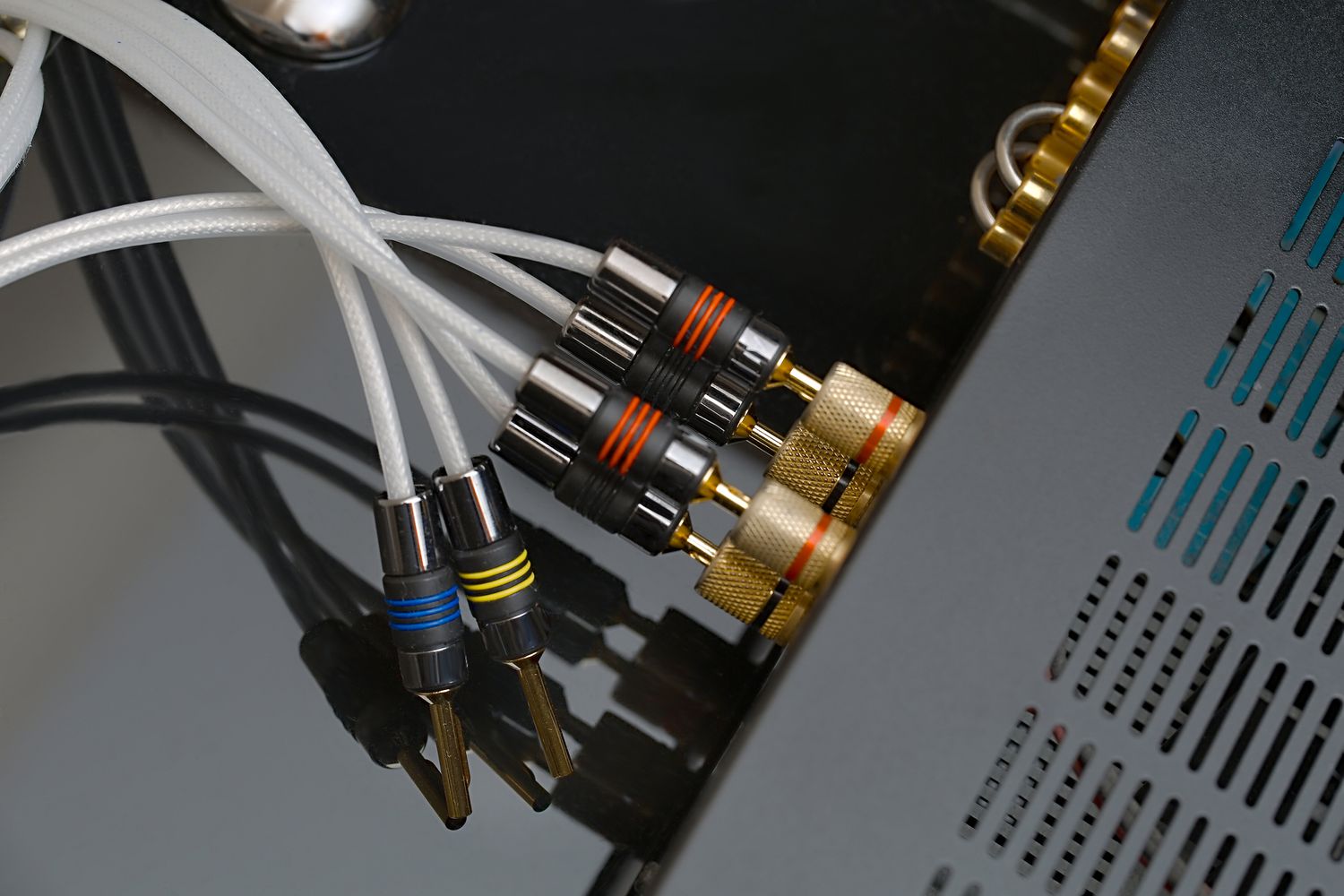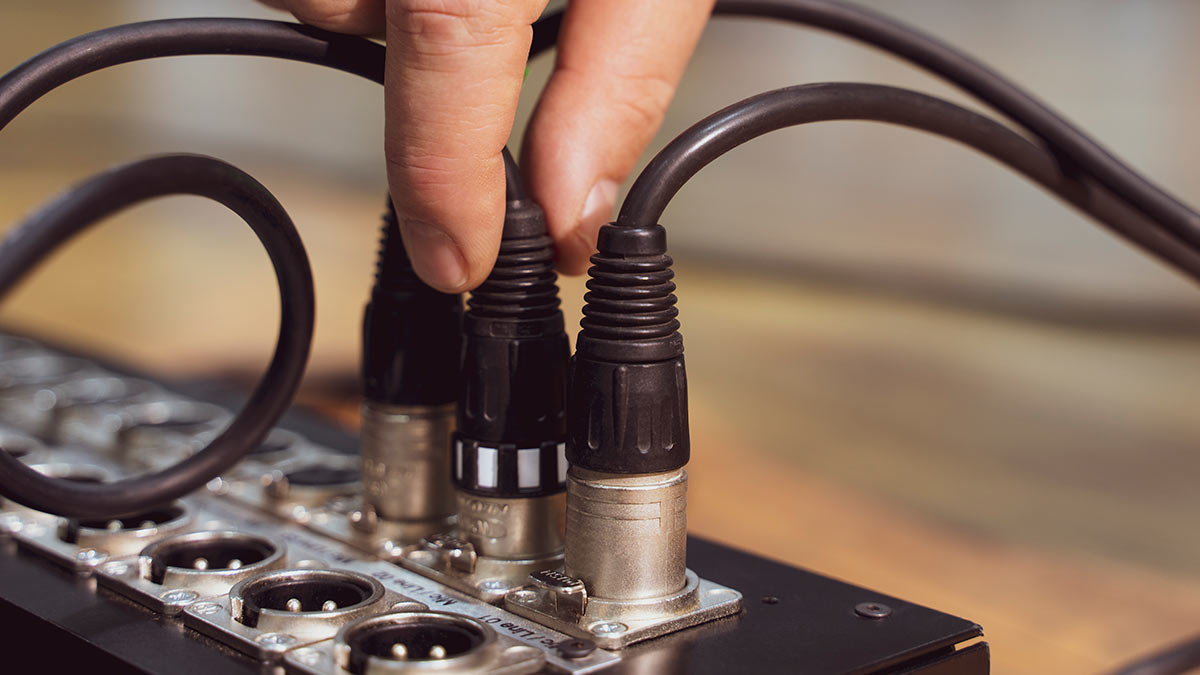Home>Production & Technology>Audio Cable>How To Set Up A Mic In Virtual Audio Cable


Audio Cable
How To Set Up A Mic In Virtual Audio Cable
Modified: January 22, 2024
Learn how to set up a microphone in Virtual Audio Cable and enhance your audio experience. Follow our step-by-step guide for optimal use of this powerful audio cable software.
(Many of the links in this article redirect to a specific reviewed product. Your purchase of these products through affiliate links helps to generate commission for AudioLover.com, at no extra cost. Learn more)
Table of Contents
Introduction
Welcome to the world of audio cables! Whether you’re a musician, podcaster, or simply someone who loves high-quality sound, you’ve come to the right place. In this article, we’ll be exploring the fascinating realm of virtual audio cables and how they can revolutionize your audio setup. If you’ve ever wondered how to connect your microphone to your computer in a seamless and efficient way, then this is the guide for you.
Before we dive in, let’s take a moment to understand what exactly a virtual audio cable is. In essence, it is a software application that allows you to route audio signals between different applications or devices on your computer. With the help of a virtual audio cable, you can connect your microphone to various programs, such as digital audio workstations (DAWs), VoIP applications, streaming software, and more. This opens up a world of possibilities and enables you to achieve professional-grade audio recordings or broadcasts.
Setting up a virtual audio cable may sound daunting, but fear not! In this guide, we’ll walk you through the entire process, step by step. By the end, you’ll have a solid understanding of how to set up your microphone in virtual audio cable and unleash its full potential.
So, if you’re ready to take your audio setup to the next level, let’s get started with installing virtual audio cable on your computer. Don’t worry, it’s easier than you think!
What is Virtual Audio Cable?
Virtual Audio Cable, also known as VAC, is a software application that emulates the functionality of physical audio cables. It creates virtual audio devices, allowing you to route audio signals between different software applications and hardware devices on your computer.
Unlike physical cables that connect physical audio inputs and outputs, virtual audio cables operate entirely within your computer’s software environment. They provide a virtual bridge that enables seamless audio communication between various programs and devices.
Here’s how it works: Virtual Audio Cable creates two or more virtual audio devices, known as virtual cables. These cables act as conduits for audio data, allowing you to route audio signals from one application or device to another. When you connect your microphone to a virtual audio cable, the audio signal from the microphone is captured and routed to the designated destination, such as a recording software or voice chat application.
Virtual audio cables offer several advantages over physical cables. Firstly, they eliminate the need for complex wiring setups and additional hardware. With virtual audio cables, you can achieve audio routing and mixing directly within your computer, saving you time and money.
Secondly, virtual audio cables provide flexibility and versatility. You can easily configure and reconfigure audio connections as per your requirements without dealing with physical cable constraints. This means you can connect multiple microphones, mixers, audio interfaces, and software applications simultaneously, giving you complete control over your audio workflow.
Furthermore, virtual audio cables offer improved audio quality compared to traditional analog connections. They use digital audio signals, ensuring pristine sound reproduction without any degradation in signal quality.
Whether you’re a musician recording your latest masterpiece, a podcaster recording episodes with remote guests, or a gamer streaming your gameplay with crystal-clear audio, virtual audio cables are an invaluable tool for enhancing your audio setup.
Now that we have a better understanding of what virtual audio cables are, let’s move on to the installation process. In the next section, we’ll guide you through the steps to install virtual audio cable on your computer.
Installing Virtual Audio Cable
Installing Virtual Audio Cable is a straightforward process that requires downloading the software from the official website and following a few simple installation steps. Here’s a step-by-step guide to help you install Virtual Audio Cable on your computer:
- Start by visiting the official website of the Virtual Audio Cable developer. You can find the website through a quick internet search.
- Navigate to the download section of the website and locate the latest version of Virtual Audio Cable. Ensure that you are downloading the appropriate version for your operating system (Windows, macOS, etc.).
- Click on the download link and save the installation file to your computer.
- Once the download is complete, locate the installation file and double-click on it to start the installation process.
- Follow the on-screen instructions provided by the installation wizard. Make sure to read each step carefully and choose the desired options as per your preferences.
- During the installation process, you may be prompted to select the number of virtual cables you want to install. The default setting is usually sufficient for most users, but you can adjust this based on your specific needs.
- After selecting the appropriate options, click on the “Install” button to begin the installation. The process may take a few moments to complete.
- Once the installation is finished, you will receive a confirmation message. Click on “Finish” to exit the installation wizard.
That’s it! You now have Virtual Audio Cable installed on your computer. The next step is to connect your microphone to the virtual audio cable, which we will cover in the following section.
Note that Virtual Audio Cable is a paid software application, but it offers a free trial version with limited functionality. You can try out the trial version before deciding to purchase a license.
Now that you have Virtual Audio Cable installed, let’s proceed to the next step: connecting your microphone to the virtual audio cable.
Connecting Your Microphone to Virtual Audio Cable
Now that Virtual Audio Cable is installed on your computer, it’s time to connect your microphone to the virtual audio cable. This step is crucial as it allows your microphone to interface with the virtual audio cable, enabling audio signal routing to various applications and devices. Here’s how you can do it:
- Start by connecting your microphone to your computer using an appropriate audio cable or USB connection. Ensure that your microphone is properly plugged in and recognized by your operating system.
- Once your microphone is connected, open the Virtual Audio Cable control panel. You can usually find it in your computer’s system tray or by searching for “Virtual Audio Cable” in the start menu.
- In the Virtual Audio Cable control panel, you’ll see a list of virtual cables that were installed during the setup process. Each cable represents a virtual audio device.
- Locate an available virtual cable and select it. This will be your microphone’s output device, which will receive the audio signal from the microphone.
- Next, open the sound settings on your computer. This can usually be done by right-clicking on the speaker icon in the system tray and selecting “Open Sound settings” or a similar option.
- In the sound settings, navigate to the “Input” or “Recording” tab. Here, you should see a list of available input devices, including your connected microphone and the virtual audio cable devices.
- Select the virtual audio cable device as the input device for your microphone. This will ensure that the audio from your microphone is routed through the virtual audio cable.
- Save the changes and exit the sound settings.
That’s it! Your microphone is now connected to the virtual audio cable. Any audio signal captured by your microphone will be routed through the virtual audio cable and can be accessed by other applications or devices that are connected to the virtual audio cable.
Keep in mind that the exact steps may vary slightly depending on your operating system and version of Virtual Audio Cable. It’s always a good idea to consult the software documentation or the developer’s website for more detailed instructions.
Now that your microphone is connected to the virtual audio cable, it’s time to move on to configuring the virtual audio cable to optimize its performance. In the next section, we’ll guide you through the configuration process.
Configuring Virtual Audio Cable
After connecting your microphone to the virtual audio cable, it’s important to configure the settings to ensure optimal performance. Configuring Virtual Audio Cable involves adjusting various parameters to meet your specific requirements. Here’s a step-by-step guide to help you configure Virtual Audio Cable:
- Open the Virtual Audio Cable control panel on your computer.
- Within the control panel, you will find settings related to each virtual cable installed on your system.
- Click on the virtual cable that you connected your microphone to.
- Adjust the buffer size. The buffer size determines the amount of audio data that is processed at a given time. A smaller buffer size can reduce latency but may require more processing power, while a larger buffer size can increase latency but may result in more stability. Experiment with different buffer sizes to find a balance that works for your specific needs.
- Configure the sample rate. The sample rate determines the number of audio samples taken per second. It is recommended to set the sample rate to match the sample rate of your microphone and other audio devices to avoid unnecessary conversions and potential quality loss.
- Set the number of channels. This refers to the number of audio channels your virtual cable supports. Ensure that the number of channels matches the capabilities of your microphone and intended application.
- Additionally, you may have options to enable or disable features such as loopback or control panel notification options. These settings can be adjusted based on your preferences and specific requirements.
Once you have made the necessary configuration changes, click “Apply” or “OK” to save the settings.
It’s worth noting that Virtual Audio Cable’s configuration settings are highly customizable, giving you fine control over your audio routing. However, it’s important to be cautious and avoid making unnecessary changes unless you fully understand their implications.
If you encounter any issues or need further assistance with the configuration process, consult the Virtual Audio Cable documentation or visit the developer’s website for additional resources and support.
Now that you have configured Virtual Audio Cable, it’s time to set up your microphone in the virtual audio cable. In the next section, we’ll guide you through the process of setting up your microphone settings.
Setting Up Your Mic in Virtual Audio Cable
Setting up your microphone in Virtual Audio Cable involves configuring the specific settings within applications or devices that will receive the audio signal from the virtual audio cable. Here’s a step-by-step guide to help you set up your microphone in Virtual Audio Cable:
- Open the application or device that you want to use your microphone with. This could be a digital audio workstation (DAW) for recording music, a voice chat application for online communication, or a streaming software for live broadcasts.
- Navigate to the audio settings of the application or device. This is usually done by accessing the preferences, settings, or options menu.
- Look for the input device settings or audio input options. Select the virtual audio cable device that you connected your microphone to as the input device. This will ensure that the audio from your microphone is routed through the virtual audio cable and can be accessed by the application or device.
- Configure any additional settings related to your microphone, such as volume levels, gain controls, or effects. These settings will vary depending on the application or device you are using.
- Save the changes and exit the settings menu.
Repeat the above steps for each application or device that you want to use your microphone with. By selecting the virtual audio cable device as the input device, you ensure that your microphone’s audio signal is directed through the virtual audio cable and can be used by multiple applications simultaneously.
It’s important to note that the process of setting up your microphone in Virtual Audio Cable can vary depending on the specific application or device you are using. Some applications may have additional settings or options for audio configuration. It’s always a good idea to consult the software’s documentation or seek support from the application or device provider for specific instructions.
Now that your microphone is set up in Virtual Audio Cable, it’s time to test it and ensure everything is working correctly. In the next section, we’ll guide you through the process of testing your microphone in Virtual Audio Cable.
Testing Your Mic in Virtual Audio Cable
Once you have set up your microphone in Virtual Audio Cable, it’s important to test it to ensure that it is functioning properly and that the audio signal is being routed correctly. Here’s how you can test your microphone in Virtual Audio Cable:
- Open the application or software that you want to test your microphone with. This could be a recording software, a voice chat application, or any other program that allows you to capture or transmit audio.
- Access the audio settings or preferences within the application or software. Look for the input device options or microphone settings.
- Select the virtual audio cable device that you connected your microphone to as the input device for the application or software.
- In the application or software, create a new audio track or initiate a recording or transmission. Speak or make a sound into your microphone to generate an audio signal.
- Monitor the audio input level or waveform within the application or software. If the levels are indicating that audio is being detected, and you can hear your voice or sound playback, it means the routing through the virtual audio cable is working correctly.
- If you’re using a voice chat application or streaming software, you can also try communicating with others or test the audio output to ensure that your microphone signal is being transmitted successfully.
During the testing process, pay attention to the quality and clarity of the audio signal. Make adjustments to the microphone gain, volume levels, or any other settings within the application or software to optimize the audio quality if needed.
If you encounter any issues during the testing process, ensure that the virtual audio cable device is selected as the input device within the application or software settings. Also, double-check the configuration settings in Virtual Audio Cable to ensure they are properly set.
If you’re still experiencing difficulties, refer to the documentation or support resources provided by the application or software you’re using, as well as the Virtual Audio Cable documentation or developer’s website for troubleshooting guidance.
Once you have successfully tested your microphone in Virtual Audio Cable and confirmed that the audio signal is being routed correctly, you’re ready to start using your microphone with confidence in various applications and software.
Now that you have tested your microphone, let’s move on to the next section, where we’ll provide some troubleshooting tips to help you overcome common issues that may arise when using Virtual Audio Cable.
Troubleshooting Tips
While using Virtual Audio Cable, you may come across certain issues or challenges. Here are some troubleshooting tips to help you address common problems and ensure smooth operation:
- Check your connections: Ensure that your microphone is properly connected to your computer and that the cables are secure. Sometimes, a loose connection can lead to audio disruptions or a complete lack of audio signal.
- Verify device settings: Double-check that the virtual audio cable device is selected as the input device in the applications or software you are using. Also, confirm that the microphone settings within Virtual Audio Cable are properly configured.
- Restart your applications: If you are experiencing audio issues, try restarting the applications or software you are using. This can sometimes resolve minor glitches or conflicts.
- Update drivers: Make sure that your microphone and audio drivers are up to date. Outdated or incompatible drivers can cause audio problems. Visit the manufacturer’s website to download and install the latest drivers.
- Adjust buffer size: If you are experiencing latency (delay) issues, try adjusting the buffer size settings within Virtual Audio Cable. Increasing the buffer size can help reduce latency, but it may require more processing power.
- Consider system resources: If you are running multiple applications or demanding tasks simultaneously, your system resources may be overloaded. Close any unnecessary applications or processes to free up resources for Virtual Audio Cable.
- Disable other audio devices: If you have multiple audio devices connected to your computer, such as external sound cards or Bluetooth headphones, temporarily disable them to avoid potential conflicts or interference.
- Try alternative settings: Experiment with different settings in Virtual Audio Cable to find the optimal configuration for your specific needs. Adjust sample rates, buffer sizes, or channel settings to see if it improves audio performance.
- Update Virtual Audio Cable: Check for updates for Virtual Audio Cable and install the latest version if available. Newer versions may include bug fixes and performance improvements.
- Refer to documentation and support: If you are still facing issues, consult the documentation or support resources provided by Virtual Audio Cable. The developer’s website or user forums may have additional troubleshooting solutions or community support.
Remember that troubleshooting can sometimes be a trial-and-error process. Patience and persistence will help you resolve any issues you encounter while using Virtual Audio Cable.
By following these troubleshooting tips and seeking assistance when needed, you can overcome common challenges and enjoy a seamless audio experience with Virtual Audio Cable.
Now that we’ve covered troubleshooting tips, let’s wrap up this guide.
Conclusion
Congratulations! You have successfully learned how to set up your microphone in Virtual Audio Cable, a powerful tool for audio routing and integration within your computer. By connecting your microphone to the virtual audio cable, you’ve unlocked a world of possibilities for professional-grade audio recording, streaming, and communication.
We began by understanding the concept of virtual audio cables and how they emulate physical audio connections within your computer. We then walked through the installation process, connecting your microphone to the virtual audio cable, configuring the settings, and testing the microphone to ensure everything was working as expected.
If you encounter any issues along the way, our troubleshooting tips should help you overcome common problems and optimize your audio experience. Remember to double-check your connections, settings, and update your drivers to ensure smooth operation.
Now that you have a solid foundation in using Virtual Audio Cable, you can explore its full potential. Connect your microphone to different software applications, record professional-quality music, engage in crystal-clear voice chats, or stream your content without compromising on audio quality.
Continue to experiment with different applications, settings, and workflows to find the setup that best suits your needs. Don’t forget to periodically check for updates to Virtual Audio Cable, as new versions may offer enhanced features and improved performance.
As you journey further into the world of audio cables, keep expanding your knowledge and exploring new possibilities to take your audio setup to new heights. Whether you’re a musician, podcaster, or enthusiast, Virtual Audio Cable empowers you to create exceptional audio experiences.
So, start harnessing the power of Virtual Audio Cable and elevate your audio game to the next level. Get ready to amaze your audience with studio-quality sound, seamless integration, and unlimited versatility.
Enjoy your audio journey with Virtual Audio Cable, and may your sound always be crisp, clear, and captivating!











